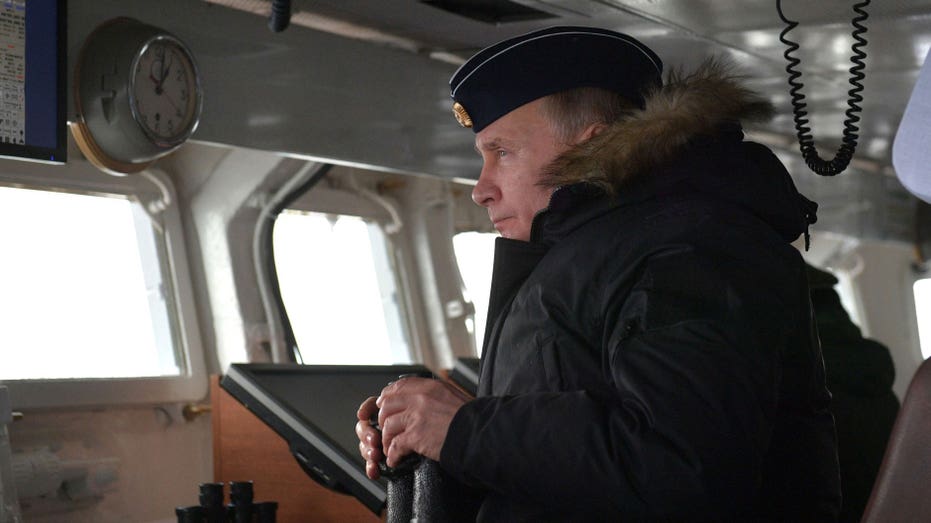Putin Invokes 'Ghost Fleet' Security Concerns as NATO Launches Baltic Sea War Games
NATO's recent exercises underscore unity amid rising Baltic tensions over Russia's shadow fleet and cable-cutting incidents.

NATO navies are mounting an impressive show of strength in the Baltic Sea this June, as more than 50 warships, supported by thousands of personnel from 17 countries, assemble for a large-scale military exercise under the leadership of the U.S. Navy's 6th Fleet. This annual event, known as BALTOPS, comes at a particularly tense moment in the region, underscoring the Alliance’s unity and determination as Russia steps up both its rhetoric and its activities near NATO borders.
Of the nine countries that border the Baltic Sea, all except Russia are now NATO members, a fact that has taken on new significance following Finland’s accession to the Alliance in 2023 and Sweden’s earlier this year. The goal of the BALTOPS exercises is not just to rehearse joint military maneuvers, but to ensure that these countries can work seamlessly together to defend the strategically critical Baltic region, especially as suspicions intensify regarding Russian activities beneath and above the waves.
Over the past year, concerns have grown about Russia's use of its so-called “ghost” or “shadow” fleet—a network of aging merchant vessels, primarily oil tankers sailing under foreign flags—to skirt Western sanctions and, at times, allegedly participate in covert operations. Western officials believe some of these ships have played a role in recent incidents involving the severing of undersea cables vital for internet connectivity, gas, and electricity supply. One notable case has seen three crew members from a Cook Islands-flagged ship, suspected of being part of this shadow fleet, face prosecution in Finland after damaging an undersea cable during a suspiciously long drag of its anchor along the Baltic’s seabed.
There are deepening fears among NATO members that Russia may be leveraging components of this fleet for intelligence-gathering, communication intercepts, and potential sabotage of regional infrastructure. Such concerns have led several NATO navies to adopt increasingly assertive measures, such as stop-and-search tactics aimed at deterring illicit activity in these crowded waters. In response, Moscow has announced it will deploy its own navy to provide armed escorts for these maritime convoys through the Baltic Sea, potentially heightening the risk of confrontation.
“The growing importance of the shadow fleet to Russia’s wartime economy, and the rising awareness that NATO must address this issue, are bringing new challenges to the region,” emphasized one naval analyst. The move to directly involve Russian navy warships in shadow fleet protection has already changed the dynamic, particularly in key chokepoints such as the Gulf of Finland.
Regional leaders have voiced alarm at these developments. “We see a more aggressive Russian approach in the Baltic Sea region,” said Denmark’s Prime Minister Mette Frederiksen at a recent summit of Nordic and Baltic NATO members. Officials point out that the Baltic’s narrow waterways, heavy commercial and military traffic, and proximity of national boundaries create an environment where even minor miscalculations could quickly escalate into a major incident.
Experts caution that increased Russian naval presence—especially alongside the shadow fleet—raises the risk of accidental encounters, at a time when direct communication channels between NATO and Russian ships have all but ceased. “With more warships operating in close quarters and fewer risk-reduction mechanisms in place, the risk of escalation is real,” warned another defense researcher.
Despite these concerns, some doubt Russia’s capacity to escort every shadow fleet ship in such a busy waterway. “This is certainly an escalation, but practically speaking, I’m not sure it changes much,” said a regional security expert, noting that while Russia’s Baltic Fleet is the largest national navy in the area, it has traditionally played a secondary role compared to the rest of Moscow’s naval forces. However, its specialized knowledge of the Baltic’s shallow, brackish waters gives it certain tactical advantages, including the ability to hide ships amidst the labyrinthine Swedish and Finnish archipelagos.
The current BALTOPS exercise, featuring U.S. guided missile destroyers and command ships, stands as an unmistakable reminder to Russia of NATO’s substantial combined firepower and operational capability in the region. For smaller NATO navies, the visible presence of American warships offers reassurance amid the rising tensions.
Recent incidents highlight the evolving game of cat-and-mouse underway. Estonia’s navy successfully brought one suspected shadow fleet vessel into its territorial waters for inspection, only to have another refuse to comply shortly after. The increasing willingness of these ships to defy NATO navies—particularly when accompanied by Russian escorts—underscores both the complexity and gravity of the challenge.
Nonetheless, NATO countries are preparing to respond with a mix of continued assertive patrols, legal countermeasures such as stricter insurance requirements for transiting ships, and a renewed commitment to collective security. As the stakes continue to rise, regional leaders and military officials stress that the Alliance will neither be deterred nor back down in the face of Russia’s changing maritime strategy.




